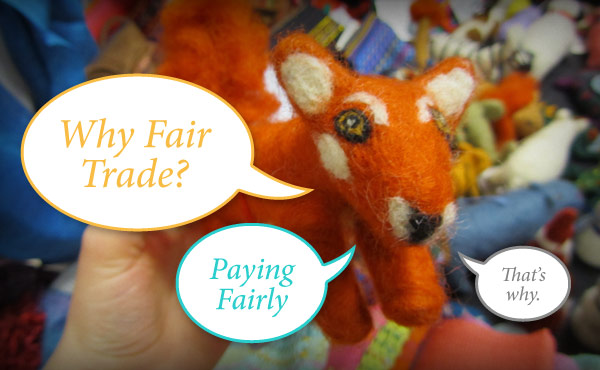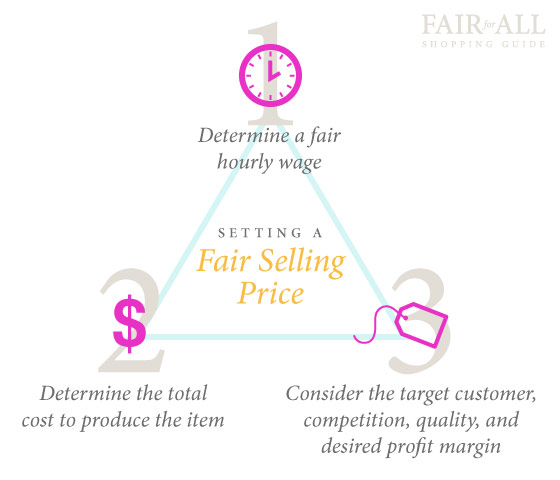
I can’t get enough of this little guy I saw at the conference!
In our series Why Fair Trade?, I aim to illustrate some of the main reasons why supporting fair trade is important to me. Today we’re going to explore the fair trade principle of paying fairly.
At first, the term “paying fairly” by itself sounds great. Who wouldn’t agree that everyone should be paid fairly for their work? But if you think about it a little longer, the question arises: what does “paying fairly” actually mean?
Here is a summary of the Fair Trade Federation’s guidelines for paying promptly and fairly:
- Empower producers to set prices based on the true costs of labor, time, materials, and sustainable growth
- Comply with or exceed international, national, local, and, where applicable, Fair Trade Minimum standards
- Equal pay for equal work by women and men
- Ensure prompt payment to all partners
- Offer producers access to interest-free advance payment or pre-financing with favorable terms
Fair traders also work to ensure that producers are paid a living wage that enables them to meet their basic needs.
I got a taste of the complexity of determining fair prices and wages in a session at the Fair Trade Federation conference last week. As described by Karen Gibbs from By Hand Consulting, the process of determining the artisan’s selling price of a fair trade handicraft goes something like this:

- Determine the fair hourly wage for the artisan(s) by considering their monthly expenses and how many hours they work. Other cultures do not always follow the American model of 8-hour workdays five days a week, so it takes research to find out what it would actually take for the artisans to earn a living wage.
- Determine the total cost to produce the item by tracking and adding the costs of materials, labor (using the fair hourly wage) and overhead. Artisans may not have accounting skills or tools, so some training is often part of this process.
- Consider the target customer, competition, quality, and desired profit margin, then set the selling price. This is the price that the artisan will receive from the first buyer, often a wholesaler.
As the item passes through the distribution channel from artisan to exporter to importer to wholesaler to retailer, the price of the item increases at each stage. These increases are due to shipping costs and the overhead and profit margins taken by each “middleman.” Many fair traders attempt to cut out as many steps as possible to reduce costs, but it’s still not unusual for the retail price of an item to be seven times more than what the artisan was originally paid. (I had no idea importing goods was so expensive. Mind = blown!)
As you can see, determining fair prices and wages is a complicated process. This makes me a little more understanding of why more companies, especially smaller companies, don’t do it (even though it’s the right thing to do), and it also makes me incredibly appreciative of the fair traders who put in the effort and commitment to ensure producers are paid fairly.
Fair payment is one of the many reasons I choose to support fair trade. Why do you choose fair trade? Do you have any questions about fair trade? Let me know in the comments!
